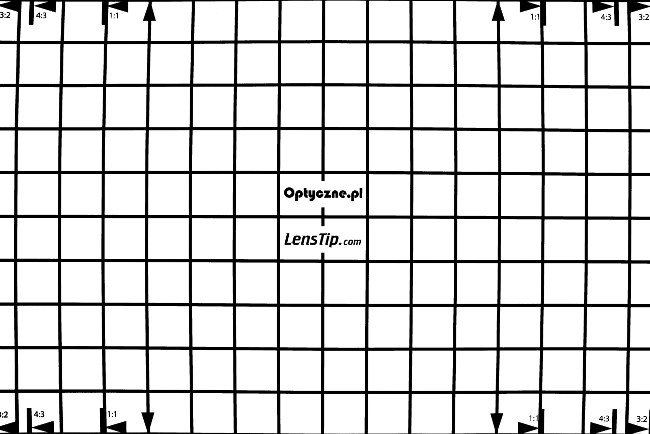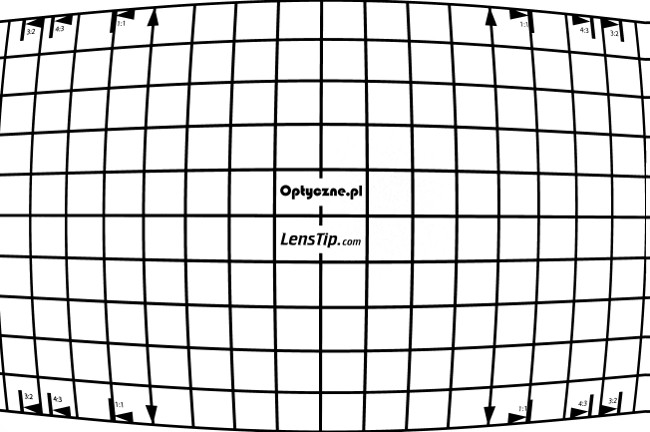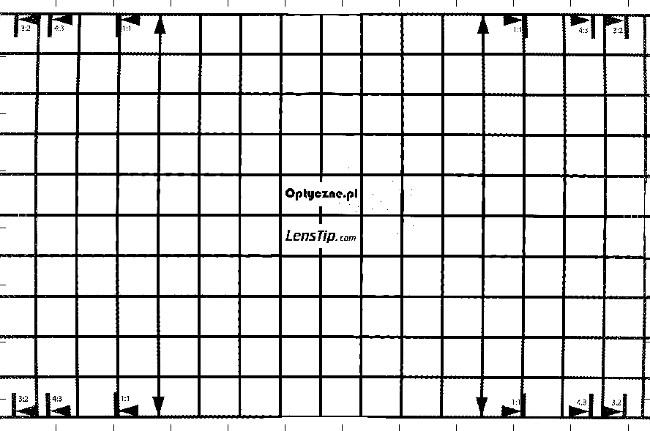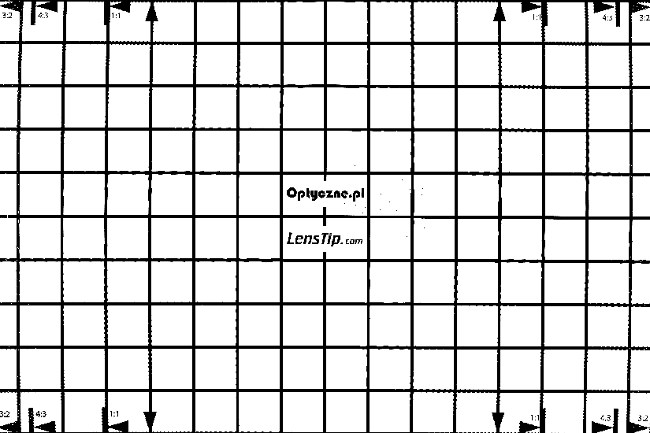Sony E 11 mm f/1.8
6. Distortion and field of view
Distortion
As soon as you attach the Sony E 11 mm f/1.8 to a camera, the distortion correction function in the camera menu is blocked and it remains in the Auto position. It suggests unanimously that the Sony optics specialits gave up on distortion correction and let software of a camera to correct geometric deformations instead. Our measurements show that it is exactly the case.While working on JPEG files you are able to notice just slight barrel distortion which level we determined as -0.75%. If you take a closer look at uncorrected RAW files you can notice the real value of distortion – it's simply huge, reaching -9.60%.
| Sony A7R III, APS-C, 11 mm, JPEG | |||

|
|||
| Sony A7R III, APS-C, 11 mm, RAW | |||

|
|||
Please Support UsIf you enjoy our reviews and articles, and you want us to continue our work please, support our website by donating through PayPal. The funds are going to be used for paying our editorial team, renting servers, and equipping our testing studio; only that way we will be able to continue providing you interesting content for free. |
- - - - - - - - - - - - - - - - - - - - - - - - - - - - - - - - - - - - - - - - - - - - - - - -
Of course distortion is easy to correct with the camera's software but such a process is hardly painless. After an automatic correction images are cropped and rescaled; it means you don't use the whole area of your detector.
We decided to evaluate such losses. The original RAW 24 Mpix file was distortion corrected using a fifth-order fitting. It allowed to reduce deformations practically to a zero level. The corrected image was cropped so 3:2 format markings could be situated in frame corners – exactly like in the case of distortion-corrected JPEG files. The result? Our new file had only 21 Mpix, it lost 3 milion of pixels, over 12%.
| Image after distiortion correction. | |||

|
|||
| Cropped image after distiortion correction. | |||

|
|||
It's worth remembering that, when a camera creates a JPEG file these 21 million of pixels have to be rescaled back to 24 million – it is called 'pumping up' the image and surplus pixels are taken from thin air.
Such a huge loss in number of pixels might be a reason why distortion is not perfectly corrected for JPEG files in the Auto mode – our measurements showed slight barrel distortion of -0.75%. It's obvious programmers decided it's better to leave a small amount of deformation in order to reduce that 'pumping up' of pixels we described above.
Field of view
As we had photos of starry sky at our disposal we decided to measure the real field of view of the tested lens for both, distortion-corrected JPEG files and neutral RAW files. It allowed us to check whether the field of view, stated by the producer, is the field before or after correction of deformations.In order to do that we transformed the pixel layout (X,Y) from the photo into the equatorial coordinate system (right ascension and declination), which locates a star on a celestial sphere. That way we could determine the field of view of the lens with utter precision and in the right way, so for rays of light coming from infinity.
In the case of JPEG files the field amounts to 105.9 degrees with the relative mesh-fitting error not exceeding 0.3 of a degree. A 11 mm rectilinear lens should provide a field of view of 104.4 degrees on the APS-C sensor so the Sony lens field provides even some reserve. Anyway, now we are sure nobody is trying to cheat you and everything is in perfect order.
It's worth remembering that JPEG files, even after correction, are left with traces of barrel distortion. If it was corrected ideally the field would be reduced a tad more and then, most likely, it would come closer to these declared 104.4 degrees. There is also a bonus – if you use neutral RAW files you can enjoy a lens with an even wider field of view. That field, measured on RAW files, amounted to as much as 112.5 degrees with a measuring error not higher than 0.3 of a degree. It's a field as big as the field of a 9-10 mm rectilinear lens on the APS-C sensor.






